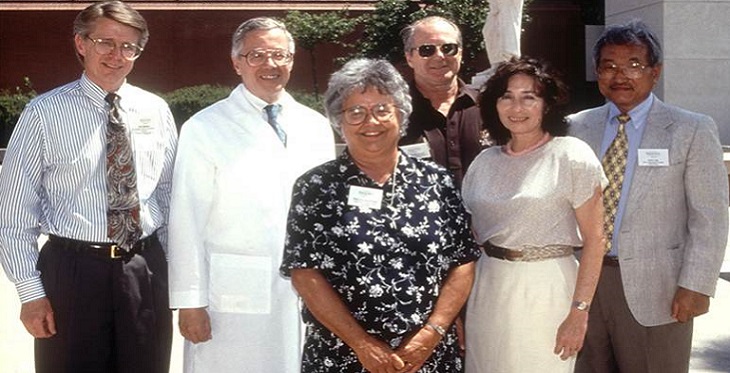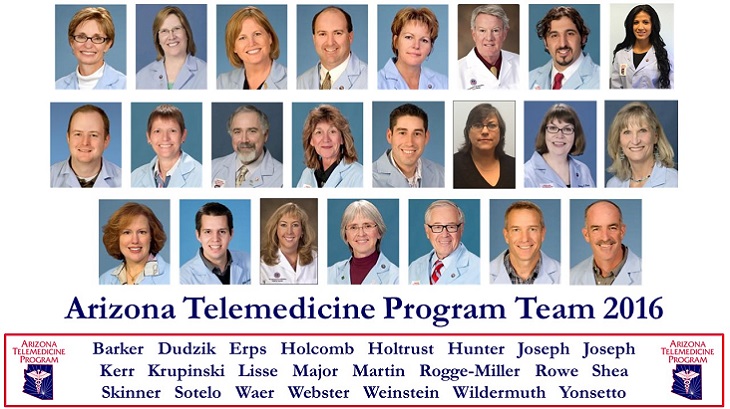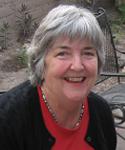Happy 20th Birthday, ATP!

Way back in 1993, Robert “Bob” Burns, then a state legislator, attended a conference in Scottsdale about the benefits of telemedicine. Delivering health care long-distance, while saving health care dollars, sounded like a great way to bring health care to Arizona’s seriously underserved rural communities. He went back to the Legislature and presented his idea for a telemedicine pilot program to fellow lawmakers. They and state budget analyst John Lee found a way to make it work.
Mr. Burns’ next visit was with James E. Dalen, MD, then dean of the University of Arizona College of Medicine in Tucson.
Dr. Dalen embraced the concept of a telemedicine pilot and appointed Ronald S. Weinstein, MD, then head of the medical school’s Department of Pathology, and inventor of telepathology, to serve as director. The Legislature authorized funding for the Arizona Telemedicine Program (ATP) in June 1996.
The phrase “health-care delivery” was about to take on a whole new meaning. And since June 1996, the ATP has been a leader – first nationally, now at the international level – in advancing telemedicine as a cost-effective way to deliver health-care.
And study after study has shown that telemedicine provides as good or better care as an in-person office visit between patient and physician.
In July 1997, the program went live with its first two sites: Mariposa Medical Center in Nogales, Ariz., and the state prison in Yuma.
One of the early cases at the Nogales clinic, now known as Mariposa Community Health Center, was that of a little girl infected with a serious viral infection. Her doctor was consulting with UA professor of pediatrics Ziad Shehab, MD, an infectious disease specialist. The little girl and her mother – who did not have a car – were in the room, and at the end of the consult, Dr. Shehab said to the child, “I’m so sorry I can’t give you a hug.”
The girl walked over to the monitor and gave it the biggest hug she could – early evidence that virtual visits are as acceptable to patients as in-person visits.
By May 2000, when the ATP had expanded its connections to 25 Arizona communities, the Arizona Daily Star published this story:
It's 250 miles from Springerville to Tucson - a long, hard drive for a cancer patient with an unreliable car.
But for Louise Winther, a breast cancer patient, the distance from her home to her doctor at the Arizona Cancer Center has been shortened to 50 miles.
Winther, who lives in Linden, a small town west of Show Low, had only to drive that far to the White Mountain Community Hospital in Springerville for a recent checkup with her oncologist, Ana Maria Lopez, MD.
The Arizona Telemedicine Program shortened her journey.
Winther sat in an exam room in the Springerville hospital while Lopez conducted the entire exam from the telemedicine conference room in the University of Arizona College of Medicine.
A video camera zoomed in close to show Lopez the inside of Winther's mouth. The camera took another close look as White Mountain hospital nurse Penny Chipman pinched Winther's ankles to check for swelling.
Then, using the technology that enables NASA physicians to monitor astronauts in space, Lopez listened through earphones as Chipman placed her stethoscope over Winther's heart and lungs.
"It's amazing. I can hear everything," Lopez said as she listened. "Ms. Winther, you sound great."
Winther and her husband, Karl, whose car gave out on their last trip to the Arizona Cancer Center, were equally impressed.
"It's wonderful. It saves us four hours of driving, one way," said Louise Winther.

Now that the ATP has reached the 20-year milestone – happy birthday, ATP! – it’s fun to look back. But Dr. Weinstein and his staff – many of whom have been with the program since the beginning – are always focused on the future.
In 2003, the ATP established the T-Health Institute in downtown Phoenix, to offer training programs, distance-learning sessions and conferences on innovations in education and health-care delivery – all of which can be broadcast to sites across the state.
ATP is now connected to 170 sites throughout Arizona. Specialists in a wide range of fields – trauma surgery, newborn intensive care, stroke diagnosis and care, ophthalmology, cancer treatment, burn care, behavioral health care and other specialties, as well as primary care – consult with colleagues in almost every rural community in the state.
Outside the U.S., ATP has helped establish telemedicine programs in Albania, Kosovo, Africa and Panama, and is exploring opportunities in other countries.
The ATP, Dr. Weinstein and his staff have been recognized with numerous awards of excellence. In May, the U.S. Distance Learning Association honored the ATP for its distance-learning sessions that physicians and other health care professionals can log onto from around the state. The association’s Eagle Award, its highest award for an individual who has been a major contributor to telemedicine, went to Mr. Burns, who now serves on the Arizona Corporation Commission.
Asked if he had any idea 20 years ago what telemedicine would look like today, Dr. Weinstein said, “We couldn’t have imagined back then what telemedicine would look like today.
“But we would have recognized that in a decade the world would be very different. We just wouldn’t have been able to say precisely how that would be.”
